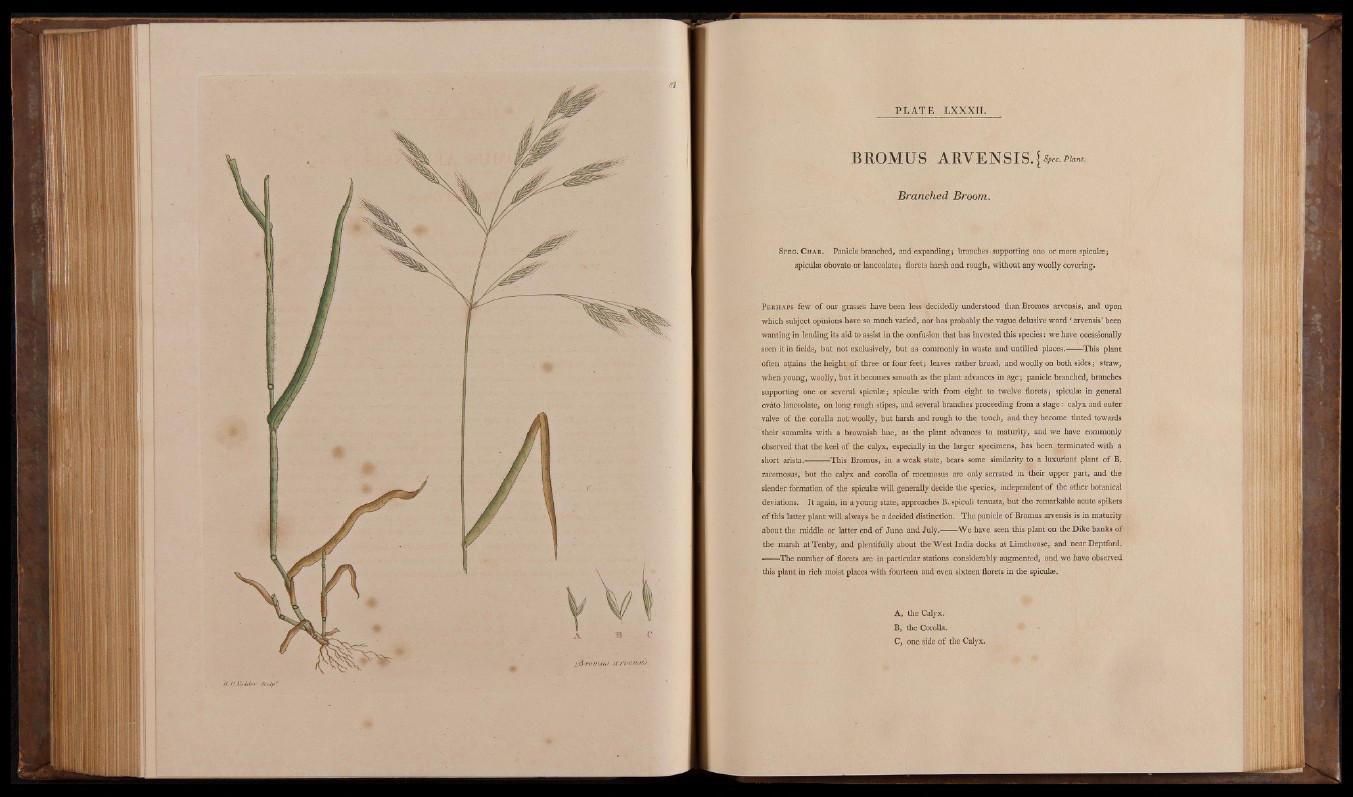
BMUMHMHHi ■ ■ ■ « ■ ttM u te iim K f lE U B te s a
P L A T E L X X X I I .
BROMUS ARVENSIS.-^,/w.
Branched. Broom.
Sp e c . C h a r. Panicle branched, and expanding5 branches supporting one or more spiculae}
spiculae obovate or lanceolate j florets harsh and rough, without any woolly covering.
P erhaps few of our grasses have been less decidedly understood than Bromus arvensis, and upon
which subject opinions have so much varied, nor has probably the vague delusive wordf arvensis’ been
wanting in lending its aid to assist in the confusion that has invested this species: we have occasionally
seen it in fields, but not exclusively, but as commonly in waste and untilled places.----- -This plant
often attains the height o f three or four feet 5 leaves rather broad, and woolly on both sides 5 straw,
when young, woolly, but it becomes smooth as the plant advances in age} panicle branched, branches
supporting one or several spiculae} spiculae with from eight to twelve florets} spiculae in general
ovato lanceolate, on long rough stipes, and several branches proceeding from a stage: calyx and outer
valve of the corolla not woolly, but harsh and rough to the, touch, and they become tinted towards
their summits with a brownish hue, as the plant advances to maturity, and we have commonly
observed that the keel of the calyx, especially in the larger specimens, has been terminated with a
short arista.-------—This Bromus, in a weak state, bears some similarity to a luxuriant plant of B.
racemosus, but the calyx and corolla of racemosus are only serrated in their upper part, and the
slender formation of the spiculae will generally decide the species, independent of the other botanical
deviations. It again, in a young state, approaches B. spiculi tenuata, but the remarkable acute spikets
o f this latter plant will always be a decided distinction. The panicle o f Bromus arvensis is in maturity
about the middle or latter end of June and July. We have seen this plant on the Dike banks of
the marsh at Tenby, and plentifully about the West India docks at Limehouse, and near Deptford.
—- The number of florets are in particular stations considerably augmented, and w e have observed
this plant in rich moist places with fourteen and even sixteen florets in the spiculae.
H
A, the Calyx.
B, the Corolla.
C, one side of the Calyx.
USA
■